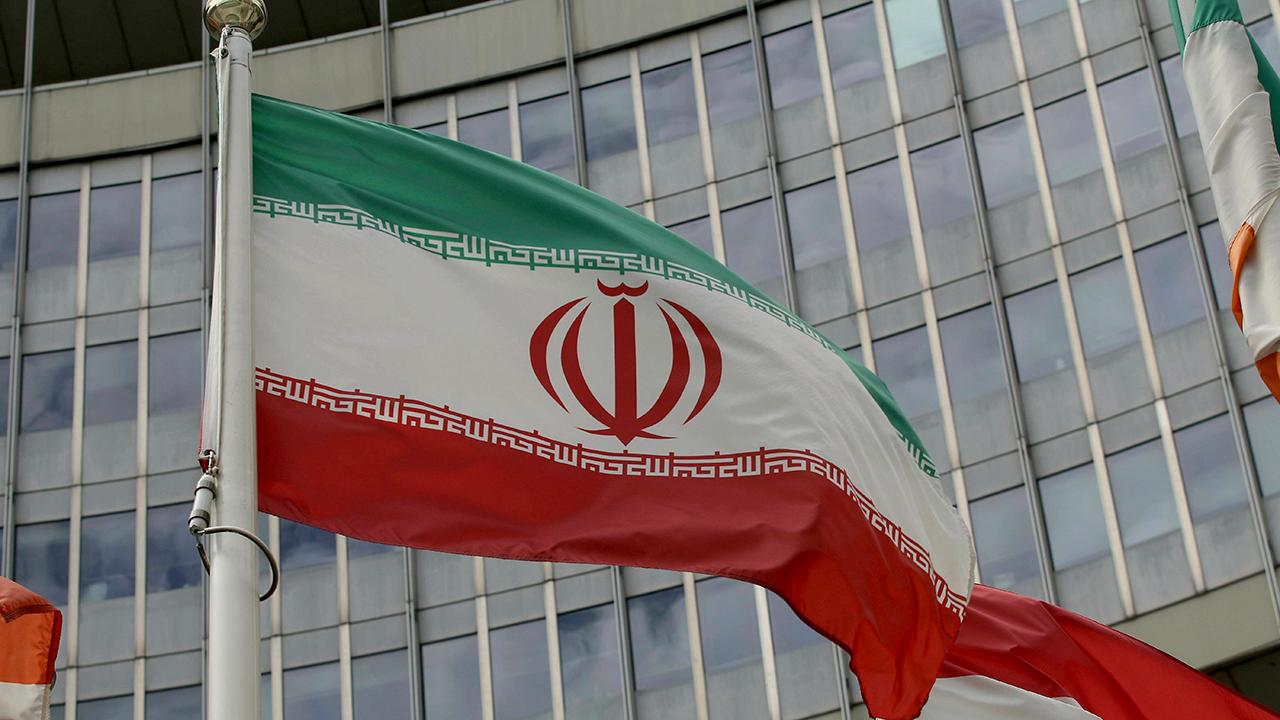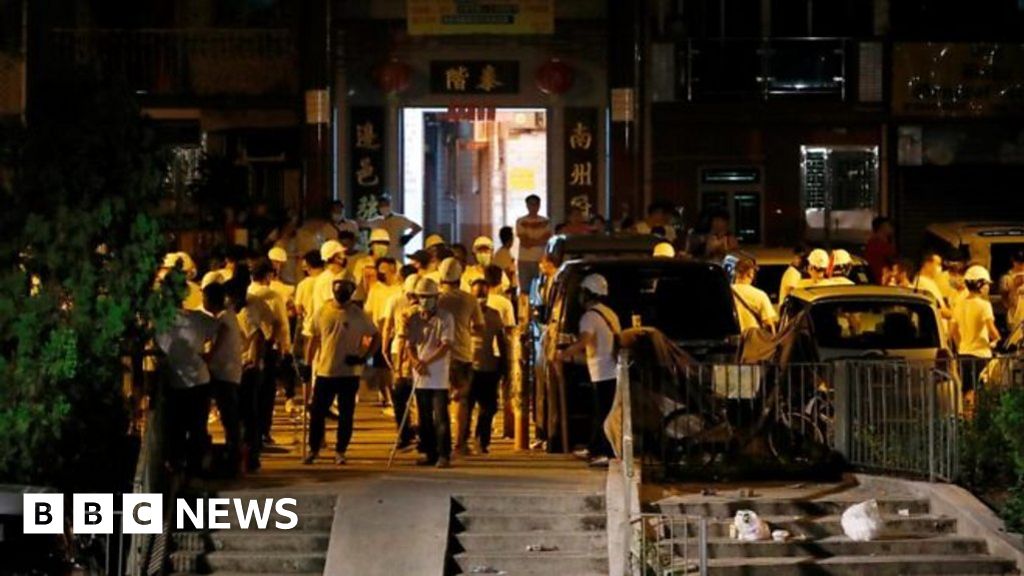"We will accomplish what is left to be done," wrote one.
The death of the woman -- known to most of the world by her last name, Mak -- was the fourth suspected suicide to be connected by local media to ongoing demonstrations, sparked initially by a controversial extradition bill that many feared could further limit freedoms in the semi-autonomous city.
Protesters have talked of sacrifice, hopelessness, and a loss of trust in their leaders. The four who died have become fixtures in protest art and been treated by some demonstrators as heroes of the cause.
But experts warn that this kind of rhetoric is risky. With many protesters in their teens and early twenties in a city where
mental health support is lacking, they warn that treating protesters as heroes could be putting others in danger.
The fight for Hong Kong
The movement to block the extradition bill has been cast as a binary life or death struggle from the outset.
When at least hundreds of thousands -- up to a million by some measures -- marched at the start of June, it was described by activists as the "last chance to fight for Hong Kong."
The deaths of the protesters only added to that intensity.
At demonstrations, protesters created banners from yellow raincoats, giving the illusion that the first death by suicide, a 35-year-old man who died wearing a distinctive yellow raincoat, was floating above them. Protesters wore black and waved black flags to honor the dead. In the mass outpouring of grief, some protesters pointed the finger at the government. For a time, a blood-red placard became ubiquitous. It read: "Stop killing us."
"He sacrificed a lot for us," a 16-year-old schoolgirl, who only gave her name as Athena, said of the man at one of the marches. "This is related to the political system of Hong Kong -- it's life-threatening and it's fateful."
In places around the city, demonstrators held memorials for the dead. They piled flowers on footpaths that formed little mountains of white and plastic, and left notes to the dead that they would never read.
"Dear Hero, we will fight for you," read one on a piece of white paper decorated with a heart. "He was dragged down by the regime," read another.
Those lost to suicide became fixtures in protest art, too. One showed the 35-year-old man and another victim holding hands as they walked toward the light with the words: "Friend, don't leave. Hong Kong people, don't give up." Even messages that didn't depict the protesters took on a darker tone. "If we burn, you burn with us," read a huge, deep-red banner.
Among some protesters, death was a point of discussion. "
Die for Hong Kong," some protesters could be heard chanting. A manifesto shared on Telegram -- an encrypted app used widely during the protests -- thanked "heroes who pay their blood and their lives."
At a press conference, pro-democracy lawmaker Claudia Mo
called on protesters to "drop the martyr mentality."
"We need to remind them that it is not worth it. Time is always on the side of the young," she said.
The problem is, the young don't necessarily feel like that.
Why things turned dark
Hong Kong is a city familiar with protests. But the protests haven't always been like this movement.
In 2014, pro-democracy protesters occupied Hong Kong's inner city streets for
79 days. Although there were scuffles, it was largely peaceful and optimistic and the protesters -- among them, many high-school students -- sang songs, set up supply tents and even created areas to do their homework.
Hope was in the air.
There was a sense that democracy might finally be possible.
Hong Kong has never had complete democracy. When the former British colony was handed over to China in
1997, Beijing promised to maintain Hong Kong's freedoms for the next 50 years. Many see Hong Kong as having less than 30 years left until it becomes another mainland Chinese city, without the right to things like freedom of assembly and free speech that they've enjoyed in the past.
Despite the optimism of the 2014 movement, when it ended, none of its aims had been achieved. Key protest leaders were
imprisoned and, in the following years, enthusiasm for protests waned.
So when protesters took to the streets earlier this year, they released years of suppressed anger and distrust of the government, according to Samson Yuen, a political scientist at Hong Kong's Lingnan University.
That anger was soon exacerbated. Police have fired
pepper spray,
tear gas and rubber bullets, actions which have been seen by protesters as heavy handed. Although Hong Kong's leader Carrie Lam suspended the bill, she has repeatedly
refused to withdraw it or respond to other demands, such as an independent inquiry into police actions.
The four suspected suicides added another emotional element -- especially because many saw the deaths as the fault of the government, said Yuen.
"The protest is about the life and death of Hong Kong," he said. "The protests are about continuing the wishes of those who 'gave their lives.'
"It's about how people trust the system, how people can still have confidence about the future of Hong Kong."
At a press conference earlier this month, Hong Kong's leader Lam said she was saddened by the protesters who had hurt themselves as a result of the bill. She added that the government had asked many non-governmental organizations to offer emotional consultation services, "hoping to ease the negative emotions that plague the Hong Kong society."
A 34-year-old protester, who asked not to be named, said he joined the protests after seeing the "brutal" police actions on June 12 -- and was given "faith and courage" by the death of the first protester on June 15.
"The death of (the protester) forced people to acknowledge our city's government has changed," he said. "Our impression of a government that cares for the people is shattered."
"We chose to ignore it for years that our city is slowly changing. But this time, we can't."
A hopeless future?
The bleak language -- and spate of deaths -- has lawmakers and mental health experts worried.
Paul Yip, the director for the Hong Kong Jockey Club Centre for Suicide Research and Prevention (CSRP), was concerned about the risk of copycat suicides, and the effect the negative atmosphere could have on youth who are suffering from pre-existing mental health issues.
Yip cautioned that turning people who may have had mental health issues already into martyrs risked glamorizing suicide, which could create a contagion effect.
"These people ... are the victims of a mentally stressed environment," he said.
He was also concerned about the way the media has reported on the deaths, which he believed could encourage others to take their lives. Some local media outlets have simplified the reasons behind suicide and referenced suicide methods -- both things that are discouraged by the
World Health Organization's suicide reporting guidelines,
as they could trigger suicidal ideation in vulnerable readers.
In 2017 -- the latest year for which there is data -- Hong Kong's estimated age-standardized suicide rate was
9.5 out of every 100,000, compared with 10.5 globally. Between 2015 and 2017, Hong Kong's overall suicide rate trended downward, while the the suicide rate for those aged 15 to 24 has gone up, according to data from CSRP.
And there's evidence that mental health in the city has been negatively impacted by the protests. Clarence Tsang, executive director of Samaritans Befrienders Hong Kong, said his organization had seen 73 calls in June by people distressed about the social movement, compared to only a handful on this topic in the previous months.
"Most of them are feeling hopeless, said that there is no way out, they didn't see a future," he said, adding that some were sad about the deaths, while others were upset by
family tensions over the movements.
Recent Hong Kong University Faculty of Medicine
research found there was a 9.1% increase in the prevalence of probable depression among participants surveyed between June 22 and July 7 compared with the baseline in 2011 to 2014. The study showed probable depression had been increasing in the city over the past few years, from 5.3% during 2014's Occupy Central movement to 6.1% in September 2017, three years after the failed movement ended.
In the face of all the negativity, some people in Hong Kong have rallied around each other. Candice Powell, a clinical psychologist, has set up a hotline for journalists who have been traumatized by the violence they have seen. Lawmaker Roy Kwong -- a former social worker -- has emerged as a volunteer, on-call support person to protesters.
In so-called Lennon Walls around the city, protesters have written notes on Post-its, spurring each other on. "Dear Hong Kong, everything will be alright," read one.
Yong Pui-tung, the 28-year-old best friend of Mak, said others should talk more and not to feel alone.
"I'm really afraid there will be more and more, and I don't want to see that kind of thing happen again," she said. "We should all talk more to our friends -- you shouldn't feel alone because everyone is with us.
"Hong Kong people, we stand as one and we should stay strong."
Kwong, meanwhile, urged protesters to think of the future, which he didn't believe was as negative as many expected.
"I think people need to keep a normal, calm attitude," he said. "They need to know this is a continuous fight."
How to get help: In the US, call the National Suicide Prevention Lifeline at 1-800-273-8255. In Hong Kong, call +852 2896 0000 for The Samaritans or +852 2382 0000 for Suicide Prevention Services. The International Association for Suicide Prevention and Befrienders Worldwide also provide contact information for crisis centers around the world. Contributions: CNN's Stephy Chung, Maisy Mok, Jessie Yeung, Jadyn Sham and Charmaine Lee contributed to this report from Hong Kong.
https://www.cnn.com/2019/07/21/asia/hong-kong-deaths-suicide-dark-intl-hnk/index.html














